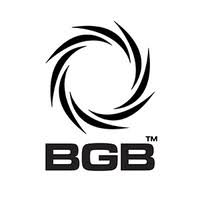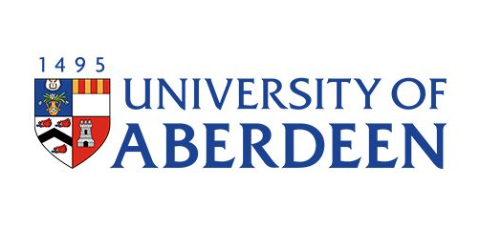
BGB - Merging two standalone Vaults | Seamless data migration enables cross-team collaboration for BGB’s transatlantic engineering projects

The engineering solutions provider, BGB, was established in 1976 and has grown from initially manufacturing electrical brush gear to developing and manufacturing power and signal slip rings for wind turbine manufacturers globally.
Between 80% and 90% of the company’s activities now focusses on the design and manufacture of slip rings— electromechanical devices that allow the transmission of power and electrical signals from a stationary to a rotating structure—and slip ring assemblies; used in wind turbines. A slip ring assembly is an equipment that enables the head of the turbine to rotate in response to wind direction, while also ensuring that the cables beneath it do not tangle within the tower as the head rotates.
With a rigorous pre-production testing requirement, BGB’s quality standards and track record have enabled them to consolidate their reputation as leaders in this highly specialised field of manufacturing. BGB estimate that they have approximately. 125,000 wind products situated in over 77 countries worldwide
BGB’s ceaseless innovation has supported recent product launches such as Fibre Optic Rotary Joints (FORJs) and the patented inductive control technology which uses contactless power for lights typically installed on luxury vessels
BGB has manufacturing facilities in the UK and U.S., with approximately 100 employees. The success of the business is driven by the agility, products and service it provides, characterised by BGB’s stated mission: "To connect, inspire and work closely together so that we are proud of our achievements, community and shared success".
Challenge: To connect and standardise systems between the UK and U.S., enabling teams to work as one
Eradicating data silos
BGB has grown both organically and through acquisition. As its once-standalone businesses began to assimilate their operations and teams into a greater entity, they continued to work with the systems and approaches to which their customers had long been accustomed and on which they had always depended. BGB had a more inclusive and encompassing vision, to ensure its innovation was universal, across all products, places, people and customers; not restricted by traditional processes.
As is often the case when companies splice together, the disparity between systems at BGB in the U.S. and the UK had not been problematical when the differing locations served clients based in those locations. Each ran its own version of Autodesk Vault, supplied by different vendors at a time when the standalone approach was fit for purpose.
Once the requirement emerged to work more closely together across the Atlantic—in line with the company’s strategy of creating ‘One BGB’—the need to ensure efficient, fast and seamless collaboration on projects gave rise to a significant operational challenge: to put an end to data silos and eradicate the latency issues associated with them when teams began to combine their resources and work jointly on projects.
“Having moved into the U.S, we had two separate servers, running different systems with two Vaults”, says Reuben Hall-Smith, IT Manager at BGB, based in Grantham (BGB’s Head Office). “This meant engineers had to juggle between the two when they needed to collaborate and share information. Logging in and out took up time, latency through the VPN was also a drain on time; waiting for up to ten minutes for a CAD drawing to download”.
When latency restrains agility
When engineers in Richmond, Virginia (BGB’s U.S. location) and Grantham in the UK needed to collaborate and share data, time delays involved in switching between the two operations’ vaults became increasingly frustrating; latency being an alien characteristic for teams driven by agility.
“We intended to renew our ageing servers, but other problems added to the complexity of the process”, says Reuben. “How would file sharing work between the two locations? From a day-to-day perspective, even file naming between the two locations was different and engineers had to spend time verifying that they were working on the latest version. That’s unproductive time, and it’s a far from acceptable user experience. Our intention was to move everything to the cloud and we needed a plan to ensure that Vault would function in the new environment”.
Having worked with Symetri for over ten years, and being familiar with Symetri’s track record in the implementation of cloud-based systems, BGB asked Symetri to recommend how best to handle the data migration involved in integrating the two Vaults, as part of an overall move to the cloud for BGB.
Solution: One Vault | No barriers to progress
Moving Vault to the cloud
“It was important to us to move away from the idea of ‘site-specific’ resources”, says James Wood, BGB’s Chief Design Officer, based in Richmond, “there was much expertise in the two locations that we could share more, effectively deepening the skills-set of both teams”.
James also emphasises the time that was being wasted when files had to be copied between locations and then renamed for consistency with the prevalent file-naming convention in each location. He says that the slow speeds of the VPN made it seem “almost like a dial-up connection”.
To dovetail with BGB’s decision to move all locations onto SharePoint as the first stage in its cloud journey, it was necessary to adopt a cloud-based approach to Vault at the same time. This would enable all data to be accessible from one cloud location, serving all the company’s users no matter where they were.
Moving Vault to the cloud was relatively unchartered territory as BGB had found in the U.S. when it made initial enquiries with Autodesk resellers. Symetri showed BGB how possible the seemingly impossible would be, by referring to numerous pan-European customers for whom they had resolved the same issue. Symetri’s next step was to set up a test environment to gain full insight into challenges that could be anticipated along the way, bringing this experience to bear on the BGB project. Following the ‘all-clear’ at this stage, the data was uplifted to the cloud.
With regards to ease of implementation, Reuben says: “When the migration actually took place, we thought that perhaps the CAD Vault would be down for a full day. The change-over was imperceptible. Nothing appeared to change, but everything had”.
Outcomes: Agility unchained
Foundations for inter-office collaboration
“Not having to log in on different servers has been a momentous change for us. Also, no longer having different IPJ files—but having just one—enables us to better organise shared projects, and makes it easier to keep track”, says James.
“Between the U.S and the UK we were running two CAD servers—the physical hardware and all the business-as-usual tasks in maximising uptime—and now we have turned them off. Everything is now in the cloud and we no longer have all the associated admin and maintenance costs to deal with”, says Reuben.
“Symetri add value to even the smallest of projects we ask for their help on”, says Reuben. “When it came to a project with the enormous scale of the data migration and moving everything on to one Vault, the value they added was impressive. There was constant communication between us and them and Symetri’s response was never less than enthusiastic, immediate and knowledgeable”.
“The Vault cloud transformation is now well underway”, says James. “Certain aspects of Vault management remain to be integrated—such as part numbering, orders, styles, and templates— but the bulk of the task is complete. The foundations are set for true inter-office collaboration, faster working, no wasted time, and no cost burdens. We have Symetri to thank for all that”.
Challenges
- Enabling teams in the U.S. and the UK to work in seamless collaboration
- Eliminate latency issues affecting file download times
- Increase productivity
- Support ‘One BGB’ move to the cloud
Solutions
Test environment to evaluate smooth pathway for data integration from two Vaults; and data migration to the cloud
Benefits
- Two Vaults become one; two teams work as one
- Faster download time
- No need for file renaming or realignment when transferring from one location to the other
- Satisfied users, enhanced sales support, enhanced quality assurance
Contact us
Please submit your enquiry here and a member of our team will get in touch.
Alternatively call 0345 370 1444
Related Cases


Taking the next step in innovation: Symetri Fusion 360 training for HiiROC, leaders in Thermal Plasma Electrolysis
Meet HiiROC, they develop transformational technology for low-cost, zero-emission hydrogen generation. The company has developed and patented a new process for creating hydrogen, known as Thermal Plasma Electrolysis (TPE). TPE is an electrically d... Learn more



